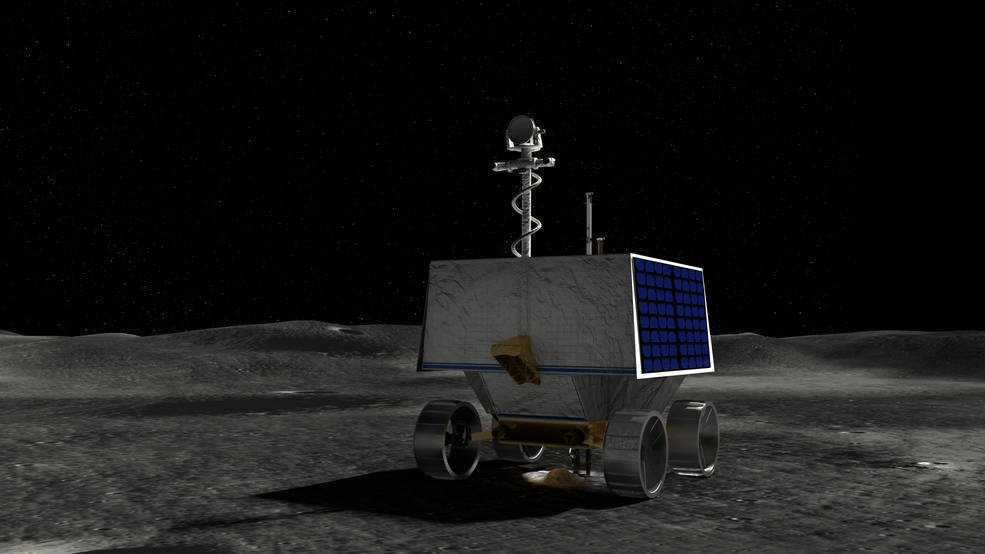What to Know About NASA’s VIPER
Daniel Rutter/NASA
NASA’s Artemis program will be sending their Volatiles Investigating Polar Exploration Rover (VIPER) to the Moon’s South Pole in late 2023. The rover will use its four instruments to analyze the lunar soil in the Moon’s Nobile Crater and determine if water content is present. Water sources on the Moon can provide rocket fuel, breathable oxygen, and make space travel cheaper and more fundamental. The discoveries it makes will pave the way for future deep-space explorations.
The Artemis Program is a United States-led international human spaceflight program that was created by NASA in 2017. Their goal is to land the first woman and first person of colour on the Moon by 2024. If successful, it will include the first crewed lunar landing mission since Apollo 17, in 1972 – the last lunar flight of the Apollo program. NASA plans to continue its research on the Moon throughout the coming years for answers that could contribute to the exploration of Mars.
In 2017, US President Donald Trump proposed sending astronauts to the Moon. NASA announced that they would start sending astronauts to the Moon in 2028. Trump’s administration then shifted the deadline to send astronauts to the Moon up from 2028 to 2024. Lunar scientists have been identifying their next steps for projects to explore other planets. They later proposed they would send a rover to the Moon’s South Pole, specifically to Nobile Crater, to look for water resources.
The existence of water on the moon was observed by data from previous missions. VIPER will be the first robotic rover on the Moon. It will launch in late 2023 to Nobile Crater. The rover will be controlled down at NASA’s Ames Research Center in Silicon Valley, California.
“Once on the lunar surface, VIPER will provide ground truth measurements for the presence of water and other resources at the Moon’s South Pole, and the areas surrounding Nobile Crater showed the most promise in this scientific pursuit,” NASA associate science administrator Thomas Zurbuchen states.
The rover is approximately the size of a golf cart. It will run on solar power, depending on the Sun – which is low on the pole’s horizon – to stay warm and charged for its investigations. This rover will be one of NASA’s first rovers with headlights due to the shadowed craters that are hazardous to VIPER.
VIPER will search for water and ice sources for three lunar days (equivalent to 100 Earth days). The rover will roam several miles during its mission and use its four scientific instruments to sample soil from different environments.
The rover will drill into the lunar soil, analyze it and send the reports back to Earth. VIPER will visit six locations of scientific interest and will use the drill samples to indicate whether its peripatetic route is leading to the water sources.
Nobile Crater is dark and shadowed with locations that will never see the Sun. The crater was formed through a collision with another smaller celestial body and is permanently covered in shadows – allowing ice to exist there. Nobile Crater provided many parameters for VIPER. For example, it provided visibility of Earth to help keep clear communication between the rover and the scientists at the Ames Research Center. Engineers have to use critical thinking for VIPER to manage the shadows of Nobile Crater. The surface is warm during the day and extremely cold at night. Extreme swings in light and darkness could make it harder for the rover to dodge hazards. Periods of darkness in lunar regions can last multiple Earth days, therefore, VIPER will park in identified safe retreats where periods of darkness are shorter.
The Crater showed possibilities of survival and water sources. However, scientists do not know what the crater will be like, so they are devising the rover to prepare for the lunar soil.
The rover can drive sideways or diagonally, spin in a circle and move in any direction without transmuting the way it is facing. If the rover encounters soft soils, it will be able to walk using its wheels by moving each one independently to free itself.
VIPER will study the surface of 36 square miles; ten to fifteen of which are expected to traverse during its mission. The rover will collect samples from at least three drill locations. An analysis of these samples from a variety of depths and temperatures will help scientists to better predict where else ice may exist on the Moon. With locations that do have ice, NASA will create a global resource map for future crewed lunar missions.
The cost of building and operating VIPER is $433.5 million USD and an additional $226 million USD will be paid to Astrobotic, a space robotics company, who will be sending VIPER and other science and technology payloads to the surface of the Moon.
Artemis is working to find ways of sending women, men, and robots to the Moon to collect more scientific research. The data may help in planning the future exploration of different planets, such as Mars.

